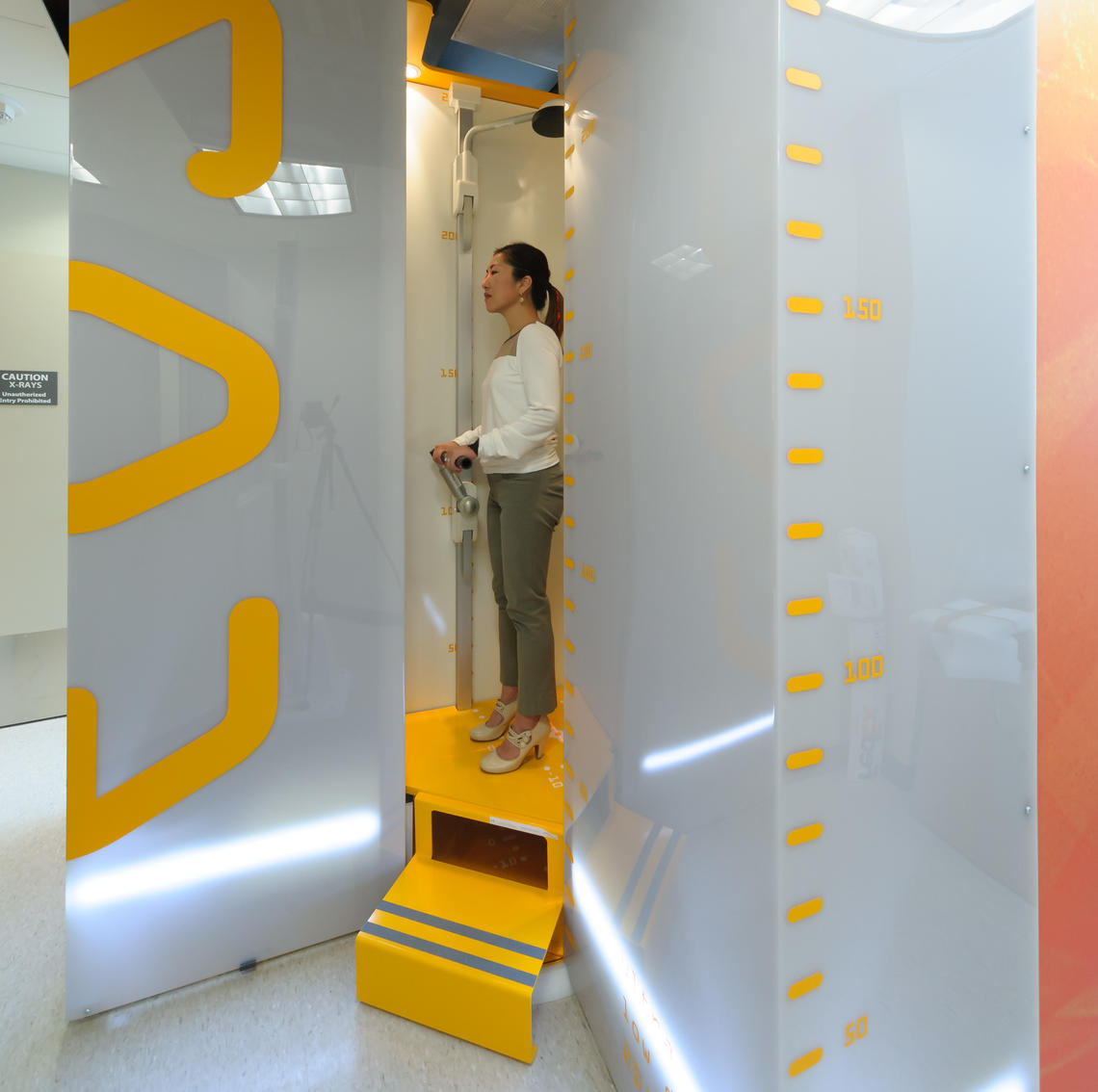
Bi-Planar X-ray (EOS)
Technical Specifications:
EOS
- Simultaneous bi-planar x-ray
- High geometric accuracy
- Low radiation dose for specialized pediatric application
Use:
- Surgical planning and follow-up
- Skeletal alignment assessment
- Scoliosis
Want to know what the EOS can be used for? Some of these papers are excellent examples:
Rouissi, Jihane, Robin Arvieu, Arnaud Dubory, Claudio Vergari, Manon Bachy, and Raphaël Vialle. “Intra and Inter-Observer Reliability of Determining Degree of Pelvic Obliquity in Neuromuscular Scoliosis Using the EOS-CHAIR® Protocol.” Child’s Nervous System: ChNS: Official Journal of the International Society for Pediatric Neurosurgery33, no. 2 (February 2017): 337–41.
Illés, Tamás, and Szabolcs Somoskeöy. “The EOSTM Imaging System and Its Uses in Daily Orthopaedic Practice.” International Orthopaedics 36, no. 7 (July 2012): 1325–31.
Morvan, A., S. Moreau, B. Combourieu, E. Pansard, J. L. Marmorat, R. Carlier, T. Judet, and G. Lonjon. “Standing Radiological Analysis with a Low-Dose Biplanar Imaging System (EOS System) of the Position of the Components in Total Hip Arthroplasty Using an Anterior Approach: A Cohort Study of 102 Patients.” The Bone & Joint Journal 98–B, no. 3 (March 2016): 326–33.
Meijer, Marrigje F., Alexander L. Boerboom, Martin Stevens, Sjoerd K. Bulstra, and Inge H. F. Reininga. “Assessment of Prosthesis Alignment after Revision Total Knee Arthroplasty Using EOS 2D and 3D Imaging: A Reliability Study.” PloS One 9, no. 9 (2014): e104613.
Nault, M.-L., J.-M. Mac-Thiong, M. Roy-Beaudry, I. Turgeon, J. de Guise, H. Labelle, and S. Parent. “Three-Dimensional Spinal Morphology Can Differentiate Between Progressive and Non-Progressive Patients With Adolescent Idiopathic Scoliosis at the Initial Presentation.” Spine, February 27, 2014.

